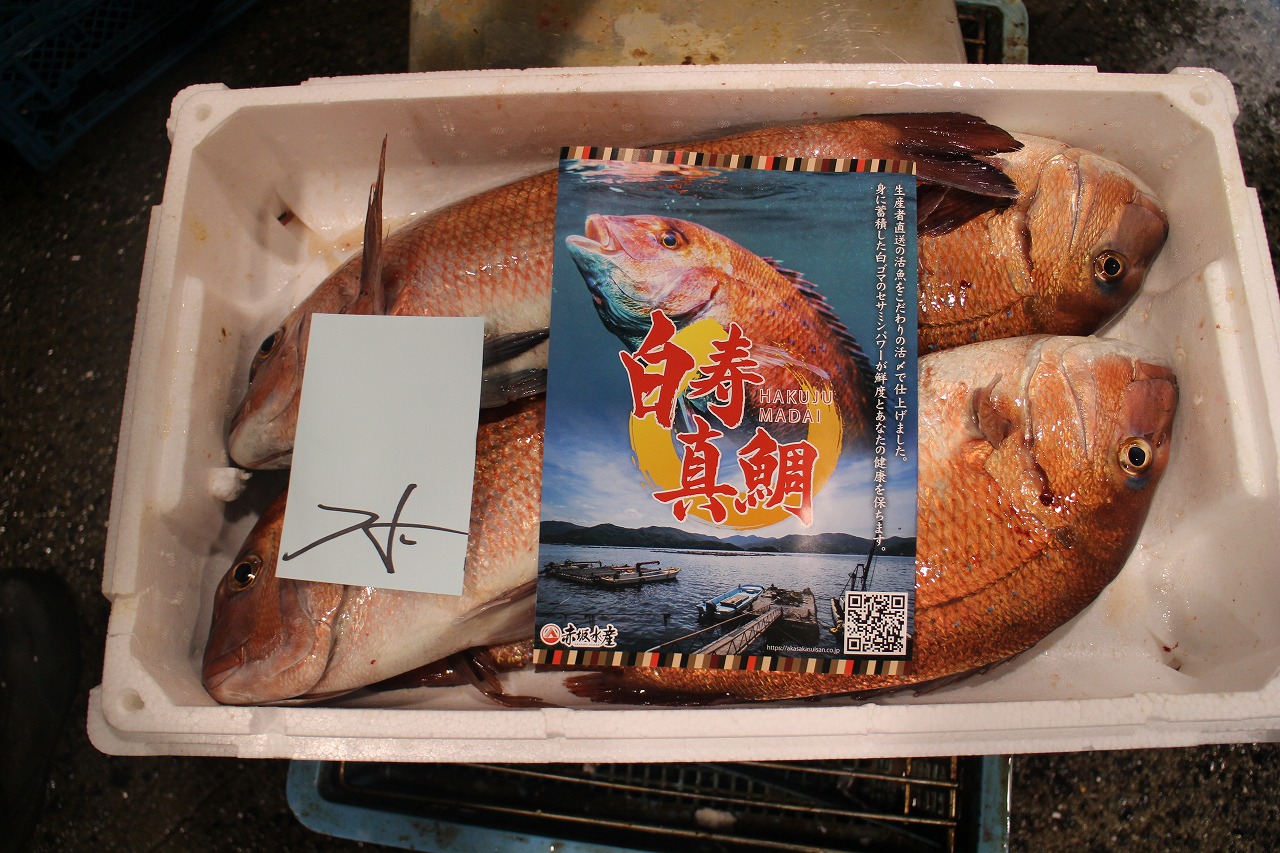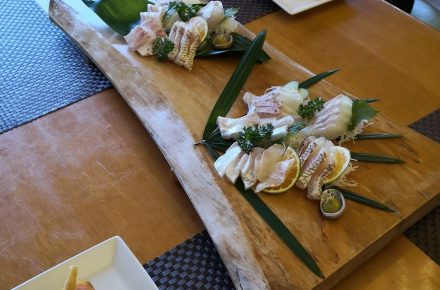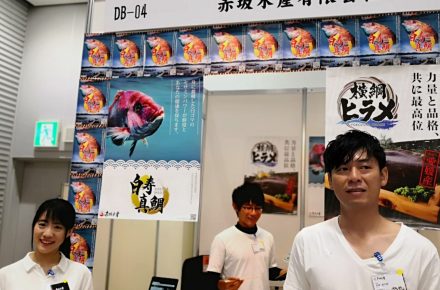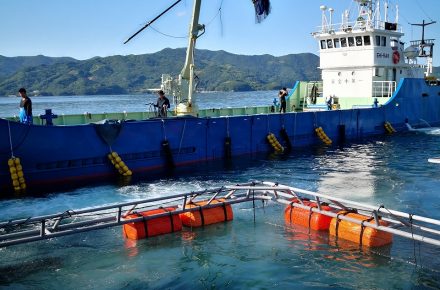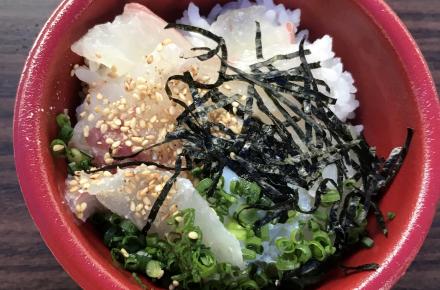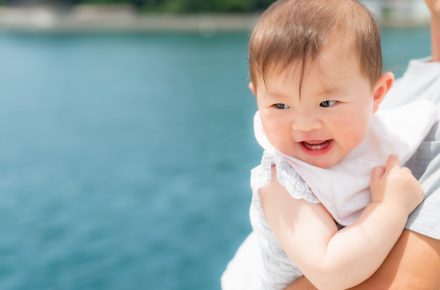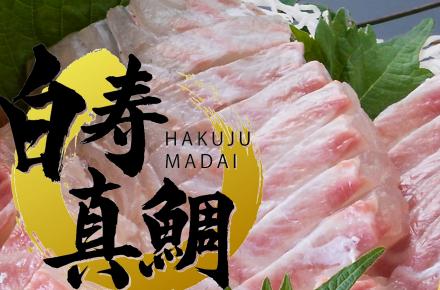It’s amazing, Hiroshima Fisheries!
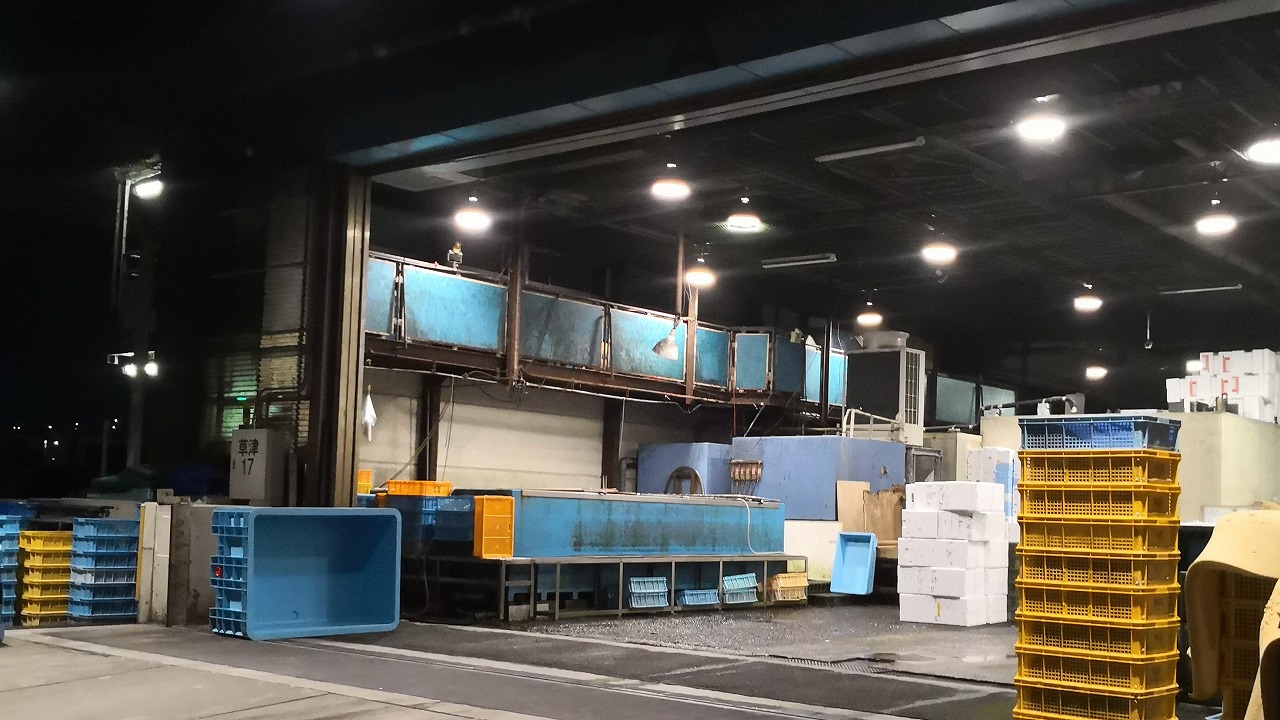
On the 20th and 21st of June, I received a request from the seafood receiving company of Hiroshima City Central Wholesale Market, Hiroshima Fisheries!
And, to everyone in the fresh fish club that is said to be responsible for 70% of the total consumption of fresh salmon in Hiroshima, I was taught about the handling method of Madai.
Market opening time is early in the morning, but Mr. Hiroshima Fisheries, who prepares products, is even earlier! The work starts at 9:00 pm the day before.
The fish that were carried alive in the beginning are transferred from the live fish carriage to a large tank.

This aquarium was so beautiful and amazing! The water is clear and there is no algae. I am impressed with the attitude to the fish, which keeps the large aquarium dealing with thousands of fish every day so beautiful.
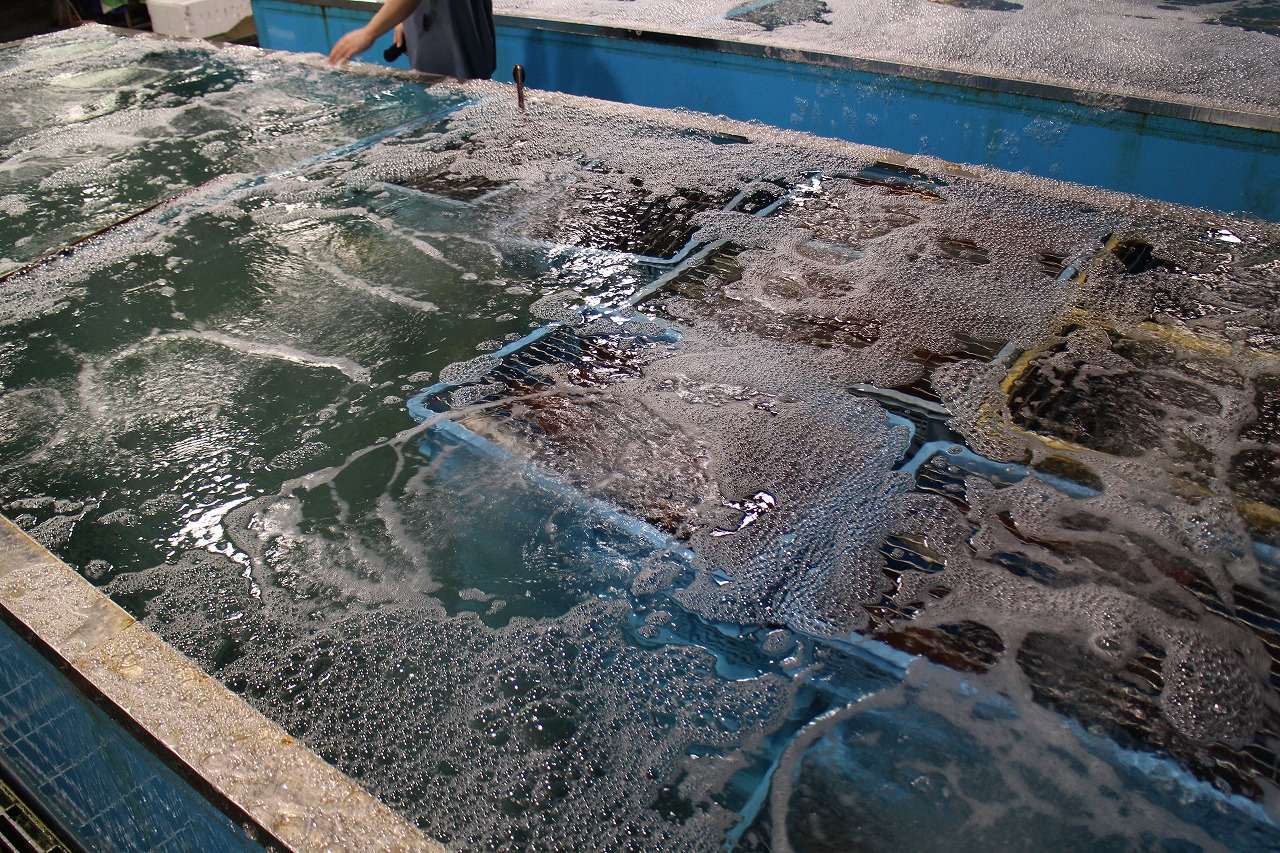
Next, one by one withdraws the case containing the mackerel transferred to the water tank and ikijime will be done by skilled people.
ikijime is to fasten the live fish in the correct order without suffering.
ikijime is done to make fish last longer. There is an amino acid called ATP in the body of fish, which is a component used for exercise and life support of fish, but it is consumed when the fish moves.
Since ATP is converted to the umami component inosinic after the death of the fish, how to leave the ATP is important for preserving the fish deliciously.
A fish that has died without suffering from ikijime, in addition to fatigue and internal hemorrhage, is likely to lose freshness and taste because it consumes ATP. The faster and more accurate the ikejime is, the less burden it has on Madai and it is stored at its best.
At Hiroshima Fisheries, first stick a hook to the head and killed the fish
If this is not accurate and fast, Madai will go wild and ATP will be consumed. All the people of Hiroshima Fisheries are quick and accurate in a single shot, so Madai is almost flat. It seems to be easy and very difficult.
Then make a cut near the collar and tail and drain the blood. You can keep the freshness for a long time by removing the blood of rotten early.
Then blow air from the incision with a pistol-like machine and remove the nerve (the cerebrospinal fluid). This shuts down the signals emitted by the brain and prevents autolysis of the fish, minimizing ATP loss.
Finally, put it in ice cold water to lower the temperature of the fish. This can extend the time to post-mortem stiffness. However, if the water temperature at this time is too low, the post-mortem stiffness will progress, so temperature control is important.
※ Blood is on the screen. Please be careful if you are not good at it
If Ikejime is good, your eyes and eyebrows will look beautiful. Thank you for handling Mr. Hiroshima Fisheries, the best condition in Makoto Hakuju!
